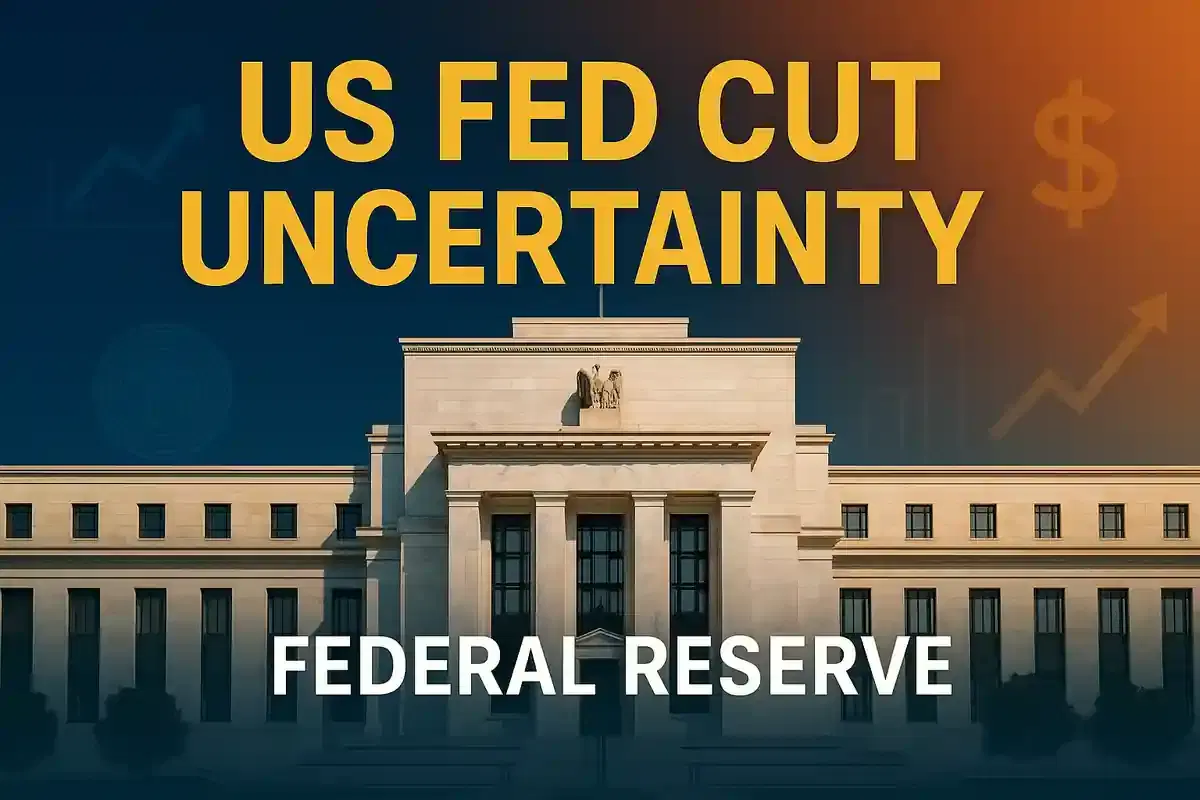US Federal Reserve Expected to Cut Rates by 0.25%, But Future Guidance Remains Uncertain Amidst Policy Divide
Economy
|
29th October 2025, 5:50 AM

▶
Short Description :
Detailed Coverage :
This week, the Federal Reserve's Federal Open Market Committee is anticipated to lower its benchmark interest rate by a quarter percentage point. This move is largely priced in by investors, with federal funds futures indicating a near certainty of the cut. The decision comes as recent inflation data, particularly the consumer price index, has come in softer than expected, providing some relief to inflation concerns. However, policymakers remain divided on the path forward.
One camp is focused on threats to the labor market, advocating for a "neutral policy stance." The other group, while acknowledging labor market risks, remains concerned about underlying inflation trends, especially in the services sector, and the potential impact of new trade levies. This division has led analysts to predict that Federal Reserve Chair Jerome Powell will offer very little specific guidance on future interest rate decisions, especially given the lack of official economic data due to the ongoing government shutdown.
Furthermore, Fed watchers are observing a growing possibility that the committee might decide to stop reducing its balance sheet. This action involves shrinking the Fed's portfolio of Treasury securities to avoid draining too much liquidity from overnight funding markets, which have shown signs of stress.
Impact This news is highly impactful for global financial markets due to the US dollar's influence and the interconnectedness of economies. Investors will be closely watching for any signals about future rate policy, which can affect currency exchange rates, commodity prices, and investment flows into emerging markets like India. The potential halt to the balance sheet runoff could also inject more liquidity into financial systems, influencing market sentiment. Rating: 9/10.
Heading Difficult Terms: Federal Open Market Committee (FOMC): The primary monetary policymaking body of the Federal Reserve System, responsible for setting interest rates. Inflation Hawks: Policymakers who prioritize controlling inflation, often advocating for higher interest rates. Neutral Policy Stance: A monetary policy position that is neither expansionary nor contractionary, aiming to neither stimulate nor restrain economic growth. Federal Funds Futures: Financial contracts representing traders' expectations of future federal funds rates. Consumer Price Index (CPI): A measure that examines the weighted average of prices of a basket of consumer goods and services. Core Measure (of inflation): Excludes volatile food and energy prices, offering a clearer view of the underlying inflation trend. Levies: Taxes or duties imposed by a government. Balance Sheet Runoff: The process by which the Federal Reserve reduces the size of its balance sheet by allowing assets (like Treasury securities) to mature without reinvesting the principal. Liquidity: The ease with which an asset can be converted into cash without affecting its market price. Overnight Funding Markets: Markets where financial institutions lend and borrow money for very short periods, typically overnight. Money Markets: Markets for trading financial instruments with high liquidity and short maturities. Volatility: The degree of variation of a trading price series over time, usually measured by the standard deviation of logarithmic returns. Stress (in money markets): A condition where the smooth functioning of short-term borrowing markets is disrupted, often leading to higher borrowing costs and reduced liquidity.